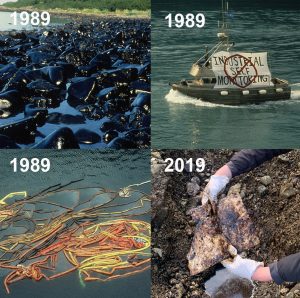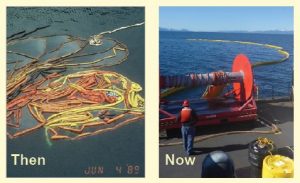
The Alaska Department of Environmental Conservation recently began a process to review and potentially change oil spill laws and regulations in Alaska. The department’s first step, a public scoping, opened on October 15, 2019.
The department is currently asking for input from stakeholders, the public, and industry on areas where Alaska’s oil discharge prevention and response contingency plan laws and regulations could be streamlined. In the department’s official announcement for this review process, Commissioner Jason Brune stated that “I’ve heard from many Alaskans that contingency plans are unnecessarily burdensome while lacking corresponding environmental benefits. To achieve Governor Dunleavy’s goal of being open for business, today we are beginning a fully transparent scoping process seeking the public’s input.”
The department is taking comments on all of its regulations on oil discharge prevention and contingency plans. In addition, the department is accepting comments on Alaska’s laws on oil and hazardous substance pollution control. These laws, or statutes, are the foundation of oil spill prevention and response regulations. Regulations can be changed by the agency that oversees them, however state law can only be amended by the legislature. While no specific revisions are being proposed by the department at this time, the Council sees this effort as having the potential to lead to a weakening of oil spill prevention and response requirements put in place after the Exxon Valdez oil spill.
Once the current public scoping is complete, the department plans to review the submitted comments and then propose specific revisions to the regulations. If changes are proposed, the department will provide an opportunity for public review and comment. Public comment periods on specific changes are required to be open for a minimum of 30 days.
The specific sections under review are:
- Alaska’s Oil Spill Regulations 18 AAC 75 – Article 4
- Alaska State Statute 46.04, Oil and Hazardous Substance Pollution Control
The original deadline of January 15 has been extended. Written comments must be submitted to ADEC no later than 11:59 p.m. on March 16, 2020.
The Council encourages the public to comment in support of strong regulations that protect our communities, environment, cultures, economies, and human health from oil pollution.

Why Alaska has such strong rules
Strong statutes and regulations are one of the main reasons why Prince William Sound has not had a major oil spill since the Exxon Valdez disaster. The world-class oil spill
prevention and response system for the Valdez Marine Terminal and associated tankers is a direct result of post-Exxon Valdez spill laws and regulations, which were designed to protect Alaskans and our environment, as well as commercial and sport fishing, aquaculture, recreation, tourism, subsistence, and cultural interests.
These laws and regulations help prevent oil spills and ensure that there are enough trained responders and equipment in place should prevention measures fail.
Read more: The history of Alaska’s world-renowned oil spill preparedness and response system